Steam Game Recommendations: The Fourth and Final Edition
March 1, 2018
Funny, this is the fourth year I’ve been doing a Steam game recommendation list for the first issue after the holiday break. Looking back on the games I’ve covered, I’m noticing a lot of titles I still haven’t stopped playing to this day. Though, I suppose it wouldn’t be a good recommendation if I didn’t like it. Either way, here it is, the fourth and final Steam game article, so grab your mouse and get ready to empty out your wallets, because here we go.
Pit People
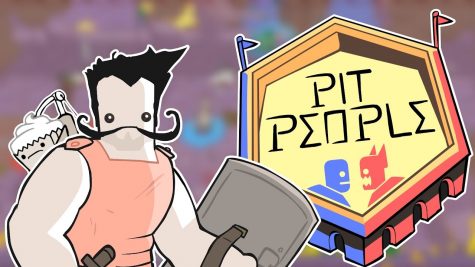
You know this list is off to a good start when the first entry is of a game made by Behemoth. Created by the same madmen behind Alien Hominid, Castle Crashers, and Battleblock Theater, Pit People is kind of like a board game designed by a total basket-case. The trademark Behemoth charm and wackiness still shine through this new approach to gameplay, and it really proves to work quite well.
Here’s something interesting to know, I actually participated in the closed beta testing for this game, so I’ve been holding onto my thoughts on this game for a LONG time now. Anyways, onto the story. Our lovably odd adventure follows Horatio, a humble blueberry farmer who is suddenly attacked by our omniscient narrator for some sick fun. On the topic of our narrator, he’s a recurring character in games from Behemoth referred to as Honeyhug, a giant, deranged bear in space, looming over the world. However, after his wife falls to our more than unreliable, sarcastic narrator who also took his son, Horatio decides to rebel against the “plot”. Seeking help, Horatio finds himself at a castle where Pipistrella, a princess of the kingdom appears to have not been spared from the attacks of our fuzzy and rather salty narrator. In the destruction of her castle, her father is killed, and she joins Horatio on his journey for vengeance. Along the way, they befriend a demi-clops named Yosef, Sophia; a Spaniard set out to chart the land, and a Cupcake called Gluten, but we’ll talk more about what his deal is when we get to the different kinds of characters. This oddball team of protagonists band together and station in an arena where combatants enter into a gladiatorial combat tournament for prize money, glory, and status within the stadium where they now live. It’s a race for the narrator in space to get Horatio’s son back and put an end to his tyrannical rule.

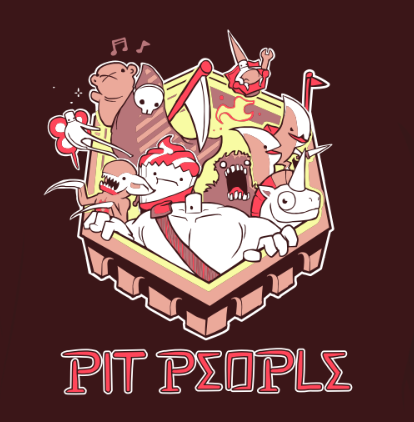
One strength I really have to appreciate this game for is the wide variety of different characters with special abilities like the aforementioned cupcake characters which heal your team of six by tearing chunks of themselves off and throwing them at allies to eat and regain energy. I could go on for awhile, but some highlights are the spidaurs, huge hybrids of a minotaur and spider that can section off small spaces of the map and carry allies on their backs; gnomes that come in pairs and ride around on hovering chairs and throw wrenches not only as an attack, but to repair/heal robot allies; and humans, the bare-bones vanilla class of character. One common factor among these characters is that you can collect new gear and customizable items to deck out your pit people with, making them twice as deadly and fashionable.
It’s a game from Behemoth, that would already warrant a recommendation, but with a solid online competitive mode and a great sense of self-referential, tongue-and-cheek humor, you can’t go wrong with this one.
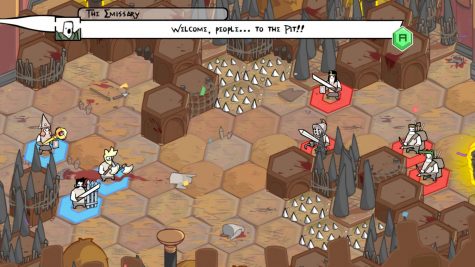
Streets of Rogue
Here’s a change of pace; it’s a game that I’m not very invested in. Streets of Rogue is a top-down pixelated dungeon-crawler inspired game that seems to be confused as to what type of game it wants to be. This game appears to not know if it wants to be like Hotline Miami, Escapists, or something original, but that’s not to say that it’s not good. Believe me, it’s not half bad.
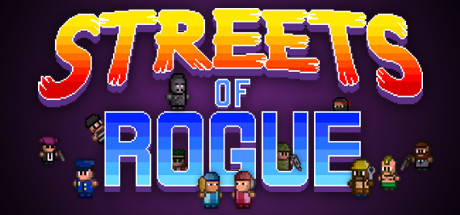
The game is about a dystopic future where the government of an area went from bad to worse, and now the people are paying the price. The corrupt mayor of this horrible corner of the world is to blame for the trouble, and thus spawned a group of agents set out to bring him down and end his rule. The controls are a little too smooth and kind of stiff at the same time, but it works fine for a game like this. One praise I have to give this game is that in each randomly generated floor you make your way through, you’re able to go about the objectives you’re given in any way you see fit. Want to try and convince someone to give you what you need without drawing a weapon? That’s a plausible option. Feel like going in, guns blazing and explosions roaring? Have at it, that’s your choice to make.
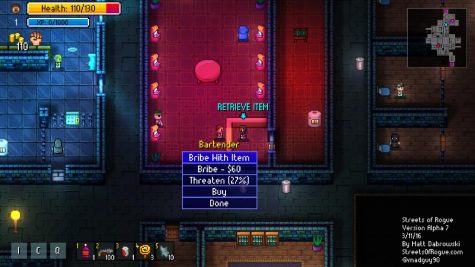
I don’t think this game is bad by any stretch of the imagination; trust me, I’ve played MUCH worse. Streets of Rouge stands as a fun little game to spend an afternoon on if you’re not sure what to play. Besides, any game that uses chicken nuggets as currency instead of money is okay in my book. I’d say try it, the soundtrack isn’t bad and the game’s okay. If you’re left wanting a bit more than what Streets of Rogue has to offer, I’d point your attention to Hotline Miami which could be considered the precursor/inspiration for this game.
Lost Castle
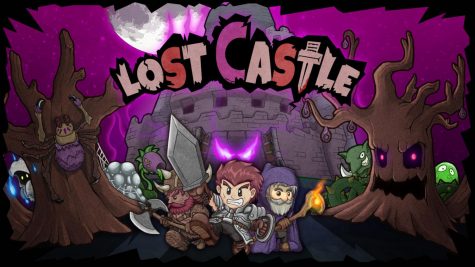
Typically, some games are better off left the way they are. Sometimes, combining games or game mechanics can be a great idea while others are a bad idea. Of course, taking Castle Crashers and adding in a restart-upon-death mechanic, keeping RPG leveling elements, and a randomized character every time you restart. Sounds like a total disaster, right? Well, you’d be wrong.
Lost Castle is about as simple as it gets for a plot: A portal was opened, monsters spewed out of it, the king lost the land, and now brave adventurers are venturing through the land to reclaim the kingdom. Here’s where things get interesting. Every time you start a new game, you play as a randomized character. From head-to-toe, right down to the type of weapon you start off with, each aspect is different. However, upon death, you can transfer points you gain into skills that make each run easier which never reset. Most people would typically think this sort of mechanic would be frustrating, but to my surprise, it really isn’t. Of course, that’s only because I have the patience to sit through this kind of thing and keep at it, but it’s not that bad.
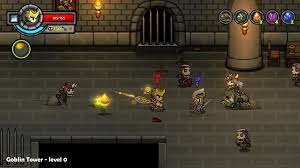
While there really is not much else to say, the ability to have four-player-co-op makes it a bit easier, but it just feels like a modded version of Castle Crashers which isn’t as bad as it sounds. The creativity is there, the controls are good, it’s a genuinely neat approach to that kind of game, and all-around, I’d say to get a couple friends and try it out.
Payday 2
Here’s another entry on the list I think is the perfect mixture of realistic and just barely over-the-top. Ever want a game where you can pull high-tech bank heists and other criminalistics jobs with three of your friends? Ever want to do so as John Wick, Jacket from Hotline Miami, Jimmy from Hardcore Henry, Scarface or Ethan and Hila of H3H3? Well, Payday 2 has you covered.
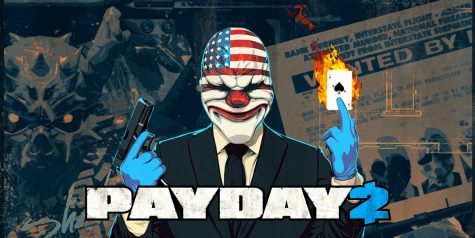
This game, as basic as it may seem, can result in four-player madness. The games are about a crew called the Payday Gang taking on various heists and jobs that require teamwork to achieve a goal that usually persists to delivering blows to corrupt companies or sometimes just for the cash. While there is a wide variety of missions to accept right away, the bulk of the interesting jobs the player(s) can take on typically are limited to DLC packs. Luckily, they have plenty included with them like new weapons, a new perk deck, or even a new character, and they seem to go on sale every now and then. However, there’s so much of it that you’d actually want to wait until the game itself goes on sale and get the Ultimate Edition so you’re not paying twice as much as you would usually pay for the game.
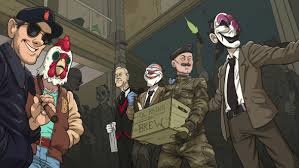
The basis of every heist is that you and your three comrades must pull off some elaborate heist, all while trying to keep each other alive. Most have the option to take a sneaky approach and “Stealth” it, or run through, guns blazing which is known as going “Loud”. Each mission also randomly is given difficulty variations, often with experience bonuses that aid in leveling up faster. The levels of challenge go from normal to Death Sentence. Subtle on how difficult it is, huh? More often than not, I end up ditching the stealth and go with kicking the door down, taking hostages which can be traded for players who are taken down enough times, grabbing everything we can, and booking it out, cops in pursuit and loot in hand.
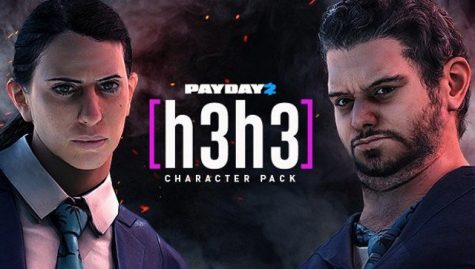
All in all, I think this game’s a winner and a must-have for PC and console owners who like to play online with friends. Speaking of consoles, this game was recently announced to now have a port to the Switch with a new character inspired by the consoles Joy-Cons, appropriately named Joy. One final note I’m going to leave this on is that if you do get this game, I HIGHLY encourage you to either play offline or with friends, because the community for this game has become so toxic that most of the people you’ll encounter online will make the experience a bit more than unpleasant.
The Witness
I’ve been really looking for an excuse to talk about this game. The Witness, on the surface, is a Myst-esque puzzle game that takes place on a mysterious island where all the people were turned to stone, and you must piece together what exactly happened. How do you do that? By solving line-based puzzles that vary with different requirements to solving them, each increasingly difficult. Some need to have a specific area sectioned-off, some have their solution hidden in the surrounding environment, and others follow a specific type of pattern.
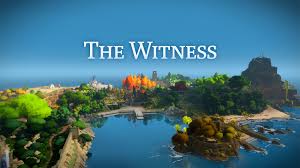
Throughout the island are optional puzzles that lead you to a box with a slip of paper in it with a pattern on it for a single puzzle, resulting in around a total of six different solutions. You may be asking yourself why there’s so many, and that’s because they all go to a hexagon-shaped puzzle that resides in a theater underground. The different ways of completing the puzzle unlocks different videos from philosophers, giving their perspective on, well, quite a bit, actually. While they do drag on (one goes on for over an hour), they’re somewhat engaging. Along with these are small recordings on tapes scattered around the map, hidden away which are often more of the same.
The last bit of gameplay that stands out is the environment puzzles. These are exactly what they sound like, puzzles hidden within the environment. But, you may be asking yourself what they do. Every time you complete one, the corresponding puzzle lights up on a nearby obelisk which has every hidden puzzle in the environment around it. After you light up the whole obelisk, what happens? A whole lot of nothing. When ALL the obelisks are completed, what happens then? Absolutely nothing, they’re just in the game to stand as a challenge. A waste of time, but at least you feel smart when you find one.
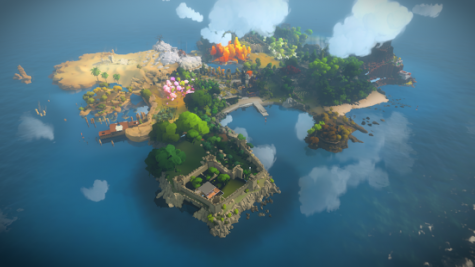
All-in-all, The Witness is a tad pretentious, but stands as a beautiful, atmospheric, hard-as-nails puzzle game that manages to stay true to its inspiration, yet stand out. Want to test your wit? Try it out and attempt to figure out the mystery.
Cuphead
Alright, time to swallow my pride and talk about this game that people won’t shut-up about. Though, to be fair, it’s not a bad game at all, it’s just that its reputation has been almost as dragged through the mud as much as Undertale for the same reason: the hardcore fans. Let me just preface something, here. I don’t hate this game at all. In fact, I actually really like this game and what it stands for.

This game is absolutely one-of-a-kind by today’s standards due to how it was all hand-drawn and animated. Not only is that a unique attribute in itself, but the games art-style was designed to resemble early 1930’s animation, calling back to Disney’s first years. Aside from a vivid, colorful appearance being a defining aspect, this game is far from easy. You may have already caught wind of the difficult legacy carried with Cuphead, but take my word for it, it’s hard; I’m talking about titanium-encrusted phonebooks levels of toughness. This game is already taking Dark Souls’ place as the challenging game people compare every single game under the sun to.
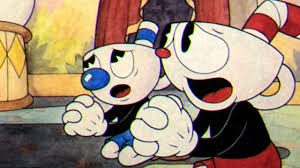
Anyway, onto the story. Two brothers, Cuphead and Mugman, one day wander too far from home, despite their parents’ warnings, and end up at a casino where they hit a winning streak. Eventually, Cuphead gets confident and bets more than just cash on a roll. After losing the next round, both their cash and their souls were lost to the owner of the establishment, the devil himself. Ol’ El Diablo decides to cut them a deal and says that he’ll give them their souls back if they can collect a few from some rather tough customers that he has unfinished business with.
Here’s where the game gets its infamous status: the difficulty of the levels. While there’s only a normal and hard mode, both are true platforming challenges that require you to make your way through a gauntlet of tough enemies, cheap attacks, and unforgiving boss battles. Despite its rather grueling difficulty with the later stages, each time you lose in a level, the death makes you feel like it wasn’t the games fault, but rather yours. This is one of the best aspects of the game. Similar to Edmund McMillan’s Super Meat Boy, Cuphead takes time, patience, and precision to beat which ensures that failure is always at the hands of the player.
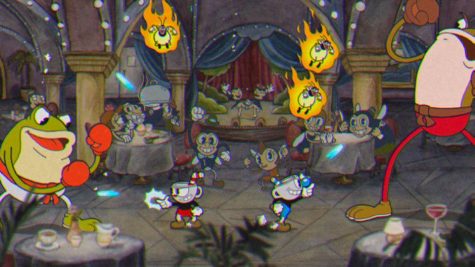
There are two different types of stages, run-and-gun platforming stages, and boss battle stages. Each are unique in their own respect, with shops here and there to sell you new weapons and abilities to keep you alive longer, add in some nifty one-off gimmicks for stages and a great soundtrack, and you’re left with a pretty original game that stands higher than most others, a pretty lofty feat for an indie game. Give it a go, it’s not bad at all.
A Hat in Time
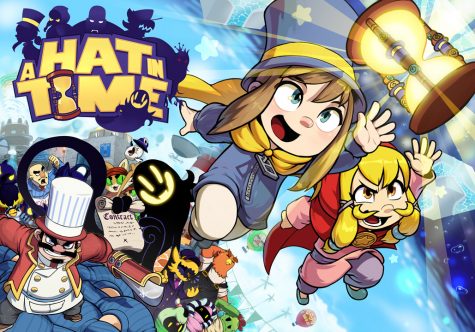
Where do I begin with this game? I guess I should start by saying that this is, if not, one of the most interesting, charming, and very, very, VERY well-done 3D platformers I’ve played. Made by an indie studio called Gears for Breakfast, it’s kind of ironic that a game this rich in quality and originality was funded through Kickstarter, which is often code for: “This game won’t be as good as you thought it would be”. However, being crowdfunded isn’t a badge of shame at all, in fact, games like Shantae: Half-Genie Hero, Undertale, and Cuphead were all funded via a Kickstarter. Similar to many games, this was trapped in what is deemed “Development Hell” where games are stuck in production and never released. Examples of games that have endured this are Duke Nukem: Forever, Alien: Colonia Marines, and The Last Guardian. Yeah, one-third of the games that actually turned out to be good isn’t the best track-record. However, last year brought the community a game that I have absolutely fallen in love with and may have a slight obsession with.
A Hat in Time is one part Super Mario Sunshine and Banjo-Kazooie, two parts original and unbelievably charming. Let’s start with the story. The plot of this game is about Hat Kid, a little girl on her way home through space when her ship is suddenly approached by a representative from an area she’s passing called Mafia Town. He demands she pay a toll to fly by, but our sassy protagonist shrugs him off, not before he manages to cause her ship to lose all of its power by releasing the vault of the ships fuel which are hourglasses known as Time Pieces. So, you may think “Great, another collect-athon. I’ll be sure to toss it over in my ‘never going to get everything in this game’ pile along with Donkey Kong 64 and Banjo-Tooie,” but it’s actually pretty reasonable in terms of what you have to collect. Even with this in mind, a plot does begin to develop in the first world, but it doesn’t really go anywhere after the last boss in Mafia Town until later on.
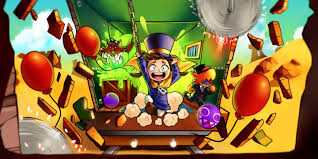
Each world consists of a small, themed map that’s just large enough for a bit of exploration, yet it feels big in scale. There’s Mafia Town, Dead Bird Studios, Subcon Forest, Alpine Skyline, and a final area that I’m not going to spoil. Your objective in each world is to collect the six-to-seven time pieces scattered around, with three or four more hidden in bonus stages called “Time Rifts”. While most Time Rifts take place in what’s called the Dreamworld, one in each world are Storybook Time Rifts. The Dreamworld stages are even more reminiscent of Mario Sunshine with a fun platforming challenge that Hat Kid must traverse. The scenery is pretty basic, yet the simplicity of it actually plays to its advantage including a serene piece of the soundtrack to accompany it. However, the Storybook rifts are condensed areas resembling the world and the player has to collect keys to proceed from floor to floor while optionally collecting pictures that come together to tell the backstory of the world.
Along with the time pieces, there’s also rift tokens that can be exchanged to use a slot-machine that gives you different color-schemes for Hat Kid’s clothes, new tracks to swap for the music in certain areas, and cool new variations of hats that change the look of them. On the topic of different hats, something else scattered throughout each world is balls of yarn that are utilized for making different hats, giving Hat Kid special abilities when equipped. Along with that are badges that can be bought from the rather glitchy salesman that appears in every world. Badges enhance your abilities or give you new and unique skills like a faster ability recharge rate, a grappling hook, or even a badge that only allows you to take one hit before your energy is depleted. The last note-worthy hidden items in the game are pieces of relics. Relics are objects, furniture, and toys that are scattered around the various worlds which must be combined together.
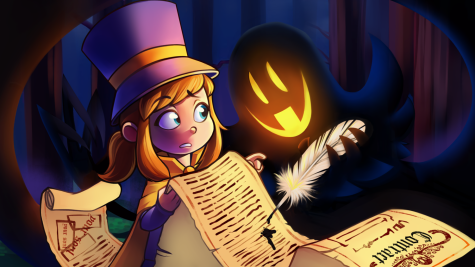
Another aspect of this game that I can’t get over are the characters. Each and every character is brimming with unique personality that never comes off as annoying or obnoxious un-ironically. From the hilarious banter delivered by The Snatcher to the name-calling, train-loving Conductor, there isn’t a single character in this game that I’ve forgotten about, even after completing it. By far, one bit of this game that has clung to me and doesn’t seem to have intent on ever letting go is the soundtrack. Easily, one definable part of this game is its music that has covered a spectrum of emotions such as wonder, suspense, and even sheer terror so well. Not only does it have the soundtrack thrive from a small group doing much of the work, but they got Grant Kirkhope (composer for games such as Banjo-Kazooie, Goldeneye 64, Yooka—Laylee, Donkey Kong 64, and more) to provide some tracks for the game. Personally, I love the Carero Remix of Your Contract has Expired and Train Wreck of Electro-Swing the most.
Had my review schedule not been packed as it is, I would have given this game its own article, but it’s still one of the games I purchased on Steam over break, so I had to stick it here. Either way, I’d recommend this game until the end of time, and I really hope Gears for Breakfast won’t let this be the last time we join Hat Kid for a new adventure.

